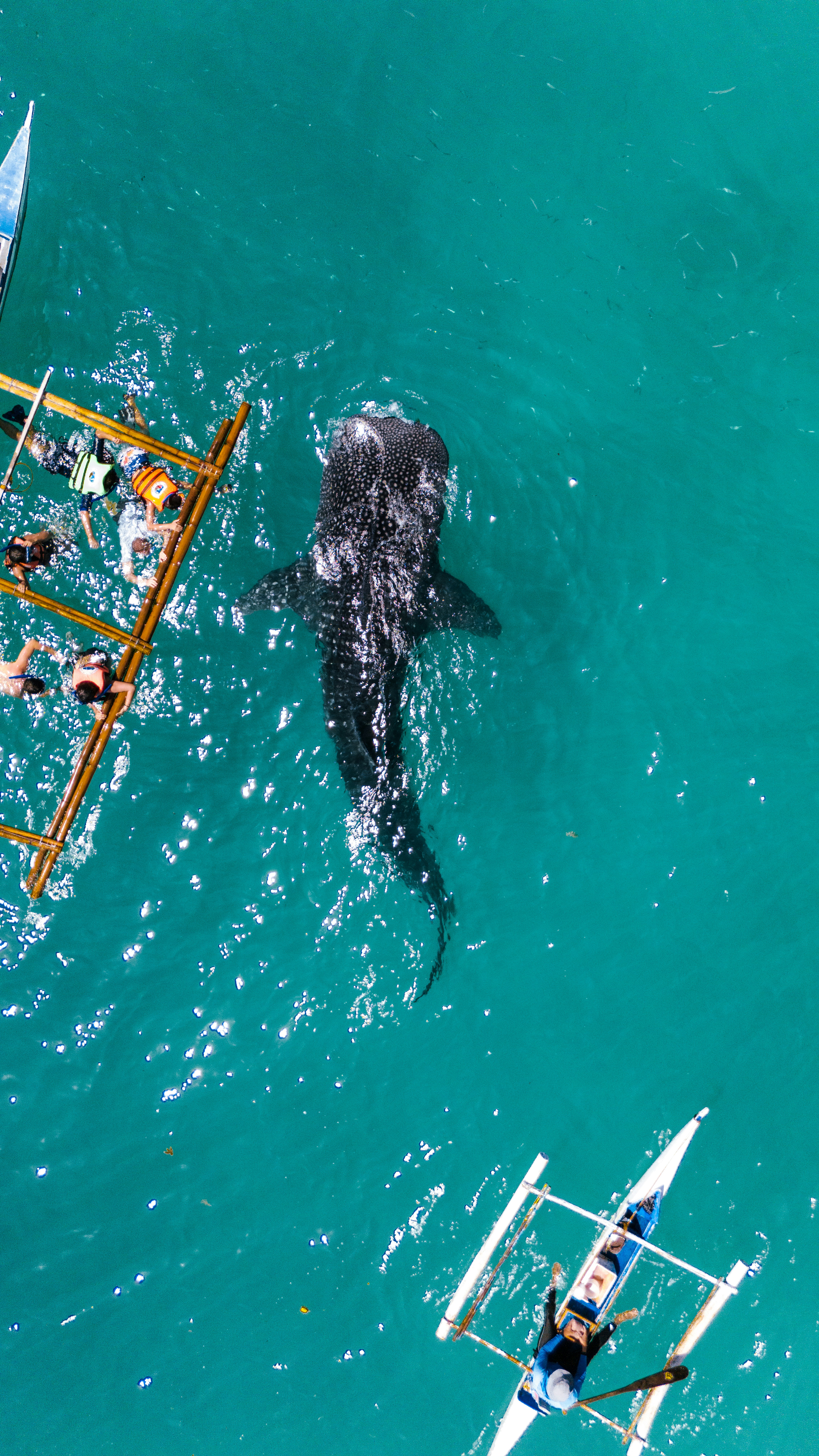Media release
From:
Nearly 80% of whale sharks in this marine tourism hotspot have human-caused scars
Human-caused injuries are common in endangered whale sharks off Indonesian Papua, but simple changes to local fishing practices could help protect them
Summary: Researchers studied a population of endangered whale sharks in the Bird’s Head Seascape off Indonesian Papua over a period of 13 years. In total, they observed 268 unique individuals, almost exclusively young males. 77% had visible scars or injuries from human-made causes such as rubbing against fishing platforms or boats. Only 17.7% had serious injuries like amputations or lacerations from boat propellers. Simple modifications to fishing platforms and boats should be effective in protecting local whale sharks from injury or scarring.
Whale sharks, the largest living fish species, are classified as endangered on the IUCN Red List of Threatened Species. Over the past 75 years, populations have declined by more than 50% worldwide, and by up to 63% in the Indo-Pacific region. Because whale sharks take up to 30 years to become sexually mature, populations can only recover slowly from threats like hunting for fins, meat, and oil, habitat loss, and entanglement in fishing nets.
Now, an international group of researchers has shown that in the Bird’s Head Seascape off Indonesian West Papua, 62% of whale sharks have scars and injuries from preventable human causes. They argue that simple interventions could greatly lessen this burden on the local population of these gentle giants.
“We found that scars and injuries were mainly from anthropogenic causes, such as collisions with ‘bagans’ – traditional fishing platforms with lift nets – and whale shark-watching tour boats,” said Dr Edy Setyawan, the lead conservation scientist at the Elasmobranch Institute Indonesia, and the study’s corresponding author.
“Relatively harmless minor abrasions were the most common. Serious injuries from natural causes such as predator attacks, or from boat propellers were much less common."
Whale shark spotting
Between 2010 and 2023, Setyawan and colleagues studied presence by whale sharks to Cenderawasih Bay, Kaimana, Raja Ampat, and Fakfak within the Bird’s Head Seascape, a region hosting a network of 26 marine protected areas and a hotspot for marine megafauna and tropical marine biodiversity. Each whale shark sports its own unique pattern of white spots and stripes, which enabled the scientists to use photos by researchers and citizen scientists to identify each one individually. Setyawan et al. also recorded the date and time of each sighting, its GPS coordinates, the shark’s sex and maturity status, size, behavior, and any visible injuries.
Over this period, they observed a total of 268 unique whale sharks, of which 98% were sighted in Cenderawasih Bay and Kaimana. Whale shark sightings were almost exclusively seen near bagans, where they typically fed on baitfish like anchovies, herrings, and sprats – either swimming horizontally or in a vertical heads-up position. They were also observed to suck fish directly from bagans, which often damaged the nets. Most sighted individuals were juveniles between four and five meters long, while 90% were males.
52.6% of whale sharks were resighted at least once, up to 11 years apart. The record holder was a young male which was recorded 34 times over three years.
Of the 206 sharks recorded with injuries or scarring, 80.6% exhibited injuries that were attributed to human-made causes, while 58.3% had injuries that were likely from natural causes (note: some individuals had both anthropogenic and natural injuries). Serious lacerations, amputations, and evidence of blunt trauma from anthropogenic causes were relatively rare, observed in 17.7% of individuals. However, non-life-threatening abrasions were common and frequently due to whale sharks rubbing against bagans or boats.
Other fish in the sea
But where did the females, and older, sexually mature individuals hang out? The researchers have a good inkling.
“Previous studies from around the world have shown that adult whale sharks, especially females, prefer the deep ocean where they feed on prey like krill and schooling fish, while the younger males stay closer to shore in shallow, plankton-rich waters that help them grow quickly,” said co-author Mochamad Iqbal Herwata Putra, a senior manager at the Focal Species Conservation Program of the national foundation Konservasi Indonesia.
“Our own satellite tracking data also show that females and adults frequently use deep sea features such as canyons and seamounts.”
“Whale sharks in Cenderawasih Bay and Triton Bay (Kaimana) had high rates of residency and resighting, indicating that they should be viewed as valuable tourism assets for local communities and governments,” said Dr Mark Erdmann, the study’s last author and Shark Conservation Director for Re:wild.
Since the majority of the whale shark sightings took place at bagans, at a time when whale shark tourism is growing, the researchers expect the risk of injuries from bagans and boats to increase in the future – unless simple steps are taken to protect the whale sharks better.
“We aim to work with the management authorities of the marine protected areas to develop regulations to require slight modifications to the bagans, including the removal of any sharp edges from boat outriggers and net frames. We believe those changes will greatly reduce scarring of whale sharks in the region," said Erdmann.



 New Zealand
New Zealand



